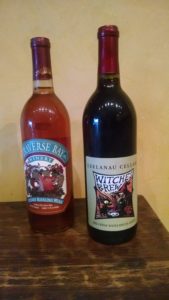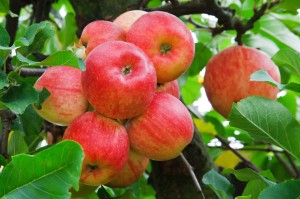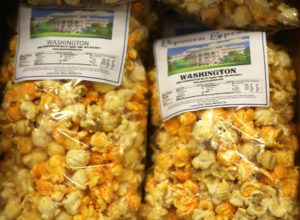
Year: 2018 and 2026
Market size: $2.53 billion and $6.22 billion, respectively.
“Have you ever pondered the miracle of popcorn? It starts out as a tiny, little, compact kernel with magic trapped inside that when agitated, bursts to create something marvelously desirable. It’s sort of like those tiny, little thoughts trapped inside an author’s head that―in an excited explosion of words―suddenly become a captivating fairy tale!”
— Richelle E. Goodrich
Whether it’s buttered and salted, caramel-coated, or tossed with spicy buffalo sauce seasoning, popcorn is a favorite snack among those who are looking to indulge their cravings as well as those looking for better-for-you, healthier snack options. While certain coatings may negate some of its healthful benefits, popcorn contains concentrated sources of fiber, polyphenolic compounds, vitamin B complex, antioxidants, and assorted proteins. Air-popped popcorn has 31 calories per cup; oil-popped 55. Today’s market size shows the global revenues for ready-to-eat popcorn in 2018 and projected for 2026.
Many scholars agree that popcorn originated in the Americas. The oldest ears of popcorn ever found were discovered in a bat cave in west-central New Mexico in 1948. They are estimated to be 5,600 years old. Early North American explorers noticed Native Americans not only eating popcorn but also using it in necklaces and headdresses. European settlers ate popcorn as a breakfast food with milk or cream. During the Great Depression, popcorn became popular as a low-cost snack and with most of the supply of sugar used for the war effort, popcorn became an alternative to sugary snacks during World War II.
Popcorn comes in two shapes: snowflake (or butterfly) and mushroom. The snowflake variety is larger and is the type sold in movie theaters, ballparks, and other entertainment venues. The snowflake variety is also the type people buy to pop at home. The mushroom variety is more compact and used in bagged snacks and in candy confections because it doesn’t crumble.
In 2017, the last year for which data exist, there were 1,051 popcorn farms in the United States spanning more than 221,000 acres. In comparison, there were 304,801 farms (84.7 million acres) that grow corn for grain and 20,784 sweet corn farms (496,096 acres). Popcorn is grown in most states, with Nebraska harvesting the most crop, 368.62 million pounds shelled, in 2017. Indiana (352.39 million), Ohio (129.76 million), Illinois (93.29 million), and Missouri (46.84 million) round out the top 5 states. Together, they represent 92.5% of popcorn harvested that year. Almost all popcorn production in the U.S. is contracted with processors. Leading global ready-to-eat popcorn manufacturers include The Hershey Company, Conagra Brands Inc., Snyder’s-Lance Inc., Intersnack Group GmbH & Co. KG, PepsiCo, Eagle Family Foods Group LLC, Propercorn, Quinn Foods LLC, The Hain Celestial Group Inc., and Weaver Popcorn Company Inc.
Most of the popcorn consumed around the world is produced in the United States but popcorn is also grown in other parts of North America, South America, Europe, Australia, and South Africa. More than 80% of popcorn produced in the U.S. is consumed domestically. In the ready-to-eat segment, North America held 31.23% of the market in 2018. Consumers’ preference for convenience and a variety of flavors will spur demand through at least 2026. In the United Kingdom, 90% of popcorn sold in supermarkets is ready-to-eat, with most of the kernels sourced from the U.S., France, and Italy and then popped in the UK. The Asia-Pacific region’s market share is expected to increase the fastest over this time period as a growing preference for this type of snack and greater awareness of popcorn’s health benefits will create higher demand in the region.
In 2018, the household segment claimed 53.23% of the market; commercial claimed the rest. With health departments shuttering movie theaters and other entertainment venues because of the coronavirus pandemic, the household segment is expected to dominate the market in 2020. In the United States, the ready-to-eat popcorn segment1 at retail amounted to $1.49 billion of the overall $26.7 billion salty snack market in the 52 weeks ended May 17, 2020, a 5% increase from the same period a year before. Although sales have been increasing in the last 5 years, the increases have been getting smaller. In 2015, this segment’s sales increased by 18.17%; In 2019, 4.1%. While the ready-to-eat segment has been increasing, the microwave segment has been declining year over year. Except in 2020. After declining an average of 3.39% from 2015 to 2019, sales jumped 13.3% in 2020 as more people stayed home with their families and binged watched favorite movies and TV shows. Raw kernel sales also saw a spike in sales. The convenience of ready-to-eat popcorn, which many may have reached for when life was busier, was eclipsed by the comfort of warm, home-popped, buttery (or sweet and savory) popcorn as people’s lifestyles slowed down dramatically.1 Includes caramel corn.
Sources: “Global Ready-to-Eat Popcorn Market is Expected to Reach USD 6.22 Billion by 2026: Fior Markets,” GlobeNewswire, March 3, 2020 available online here; 2017 Census of Agriculture, United States Department of Agriculture, National Agricultural Statistics Service, April 2019 available online here; “Popcorn Statistics and Facts,” See California available online here; Romy Schafer, “Ready to Eat Popcorn Thrives: State of the Industry 2015,” Snack Food & Wholesale Bakery, July 15, 2015 available online here; Douglas J. Peckenpaugh, “Snack Market Overview: State of the Industry 2016,” Snack Food & Wholesale Bakery, July 11, 2016 available online here; Liz Parker, “State of the Industry 2017: Popcorn Offers More Choices for Consumers,” Snack Food & Wholesale Bakery, July 18, 2017 available online here; Melissa Kvidahl Reilly, “State of the Industry 2018: Ready-to-Eat Popcorn Tops Other Varieties,” Snack Food & Wholesale Bakery, July 17, 2018 available online here; Ed Finkel, “State of the Industry 2019: Popcorn Delivers on Healthy and Indulgent Options,” Snack Food & Wholesale Bakery, July 19, 2019 available online here; Ed Finkel, “State of the Industry 2020: Popcorn Sales Explode,” Snack Food & Wholesale Bakery, July 17, 2020 available online here; “Popcorn Profile,” United States Department of Agriculture, Agricultural Marketing Resource Center, October 2018 available online here; “Popcorn: Ingrained in America’s Agricultural History,” United States Department of Agriculture, National Agricultural Library, Special Collections Exhibits available online here; “Popcorn Facts,” Popcorn Boss available online here; Key Facts About Popcorn in the UK,” SNACMA available online here; John Balint, “Popcorn 101: Butterflies, Snowflakes & Mushrooms (Oh My!),” Popcornopolis, November 11, 2015 available online here; “Popcorn Quotes,” Goodreads available online here;
Image source: John R Perry, “popcorn-candy-food-sweet-dessert-463660,” Pixabay, October 8, 2014 available online here. Use of image does not constitute an endorsement.


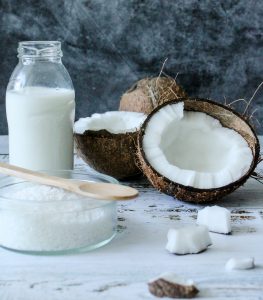



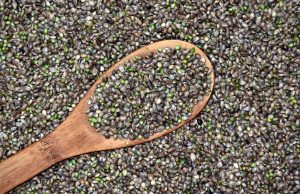


 Fortified foods, such as iodized salt and vitamin-D fortified milk, originally addressed nutrient deficiencies in the general public. Some countries currently mandate the addition of folic acid to enriched flour to reduce the risk of neural tube birth defects. Most food fortification is voluntary but regulated by government entities in countries where the food is sold along with the European Food Safety Authority and the World Health Organization. The United States, for example, does not allow the fortification of fresh produce, meat, poultry or fish products. European countries do not allow fortification of unprocessed foods. Fortification of snack foods is also discouraged.
Fortified foods, such as iodized salt and vitamin-D fortified milk, originally addressed nutrient deficiencies in the general public. Some countries currently mandate the addition of folic acid to enriched flour to reduce the risk of neural tube birth defects. Most food fortification is voluntary but regulated by government entities in countries where the food is sold along with the European Food Safety Authority and the World Health Organization. The United States, for example, does not allow the fortification of fresh produce, meat, poultry or fish products. European countries do not allow fortification of unprocessed foods. Fortification of snack foods is also discouraged. According to the National Coffee Association’s 2017 National Coffee Drinking Trends report, 62% of Americans drink coffee on a daily basis and 46% of coffee consumed is done so away from home. Although the recent popularity of coffee cafes may be traced back to the 1990s when Starbucks expanded across the country, TV show friends were seen hanging out at Central Perk coffeehouse, and laptops and wi-fi allowed workers to work from anywhere, coffee cafes are nothing new. The first public place to serve coffee dates back to 1475 in Constantinople, Turkey (now Istanbul).
According to the National Coffee Association’s 2017 National Coffee Drinking Trends report, 62% of Americans drink coffee on a daily basis and 46% of coffee consumed is done so away from home. Although the recent popularity of coffee cafes may be traced back to the 1990s when Starbucks expanded across the country, TV show friends were seen hanging out at Central Perk coffeehouse, and laptops and wi-fi allowed workers to work from anywhere, coffee cafes are nothing new. The first public place to serve coffee dates back to 1475 in Constantinople, Turkey (now Istanbul). A limited-service restaurant is one in which customers choose, order and pay for their food ahead of time. The food can be eaten in the restaurant, taken out, or delivered. Specialty limited-service restaurants specialize in one type of meal or menu item. Today’s market size shows the total sales at these types of restaurants. The top three specialty limited-service restaurants in terms of sales in 2016 were Krispy Kreme (estimated $758 million), Dickey’s Barbeque Pit (estimated $557.6 million), and Auntie Annie’s ($547.9 million).
A limited-service restaurant is one in which customers choose, order and pay for their food ahead of time. The food can be eaten in the restaurant, taken out, or delivered. Specialty limited-service restaurants specialize in one type of meal or menu item. Today’s market size shows the total sales at these types of restaurants. The top three specialty limited-service restaurants in terms of sales in 2016 were Krispy Kreme (estimated $758 million), Dickey’s Barbeque Pit (estimated $557.6 million), and Auntie Annie’s ($547.9 million).  The Canadian winemaking industry goes back more than 200 years to the early 1800s when Johann Schiller began growing hybridized grapes and making his own wine in Ontario’s Niagara region. The first commercial winery opened in 1866 on Pelee Island. In 1890 there were 41 commercial wineries in Canada, most in Ontario. By 2011 there were 476. Four years later that number grew to 604. Domestic sales of Canadian wines in 2015-2016 were C$2.1 billion. Exports were valued at nearly C$74 million in 2015.
The Canadian winemaking industry goes back more than 200 years to the early 1800s when Johann Schiller began growing hybridized grapes and making his own wine in Ontario’s Niagara region. The first commercial winery opened in 1866 on Pelee Island. In 1890 there were 41 commercial wineries in Canada, most in Ontario. By 2011 there were 476. Four years later that number grew to 604. Domestic sales of Canadian wines in 2015-2016 were C$2.1 billion. Exports were valued at nearly C$74 million in 2015. From 2012 to 2016, the number of craft breweries in the United States more than doubled from 2,420 to 5,234. In 2016, sales of craft beer made up 22%—$23.5 billion—of the overall beer market.
From 2012 to 2016, the number of craft breweries in the United States more than doubled from 2,420 to 5,234. In 2016, sales of craft beer made up 22%—$23.5 billion—of the overall beer market. 